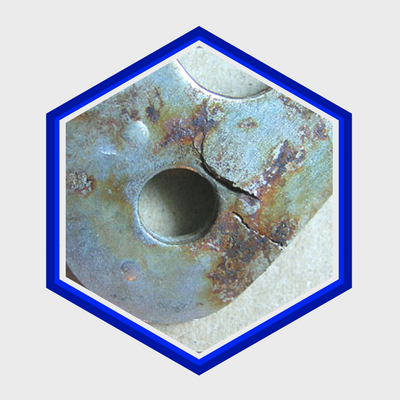Preventing Stress Corrosion Cracking with Plating

.png)
.png)
What is Stress Corrosion Cracking?
Where metals are exposed to both tensile stress and a chemically corrosive environment, the growth of crack formations may occur and lead to the sudden failure of normally ductile metals. This may also occur in conjunction with Hydrogen Embrittlement.
How Does Stress Corrosion Cracking Occur?
Different metals can encounter Stress Corrosion Cracking when exposed to a combination of prolonged tensile stress and a corrosive chemical element. Stress Corrosion Cracking is more likely to affect Alloys than Pure Metals. So far there hasn’t been a unified mechanism for Stress Corrosion although we do know which metals are likely to crack in conjunction with which chemicals.
For example Copper and its alloys are susceptible to Ammonia compounds. Mild Steels are more likely to crack in conjunction with Nitrates and Aluminium Alloys and Stainless Steel may crack when exposed to Chlorides.
Stress Corrosion Cracking normally starts as micro fractures that would go unnoticed by the eye. While the metal may appear ‘bright and shiny’ and not show the usual signs of corrosion (such as rust) microscopic cracks can form which progress rapidly leading to unexpected failure of the part.
Preventing Stress Corrosion Cracking
Where possible, it’s important during the design stage to try and avoid selecting a material which is likely to crack. Of course environments such as high temperature water which can be very aggressive to most materials and in some cases it may be difficult to balance cracking resistance with mechanical requirements such as high yield strength. The control or elimination of stress is obviously another desirable route to eliminating the potential for cracking. Often residual stress is introduced in the forming or welding process itself and may be relieved through annealing.
Plating against Stress Corrosion Cracking
Plating/Coating is certainly an option in order to aid against Stress Corrosion Cracking as it would isolate the metal from the environment. Zinc Plating is a popular coating on components that are made out of Carbon Steels, especially when used in conjunction with heat treatment in order to perform hydrogen de-embrittlement. Electroless Nickel Plating is also a very good choice for protection against Stress Corrosion Cracking not only because of its uniform coating across an entire component, but also its ability to counteract different chemically corrosive environments depending on its Phosphorus content. Low Phosphorus Electroless Nickel will protect against alkaline environments where Mild and High Phosphorus deposits can combat more acidic chemicals such as Chlorides.
Silchrome Plating carry out a wide array of metal finishing processes which includes Zinc Plating, Electroless Nickel as well as Silver, Chrome, Copper and Tin Plating. All of our processes are carried out in house at our modern manufacturing facility in Leeds, West Yorkshire and we are fully ISO 9001 and 14001 accredited.




